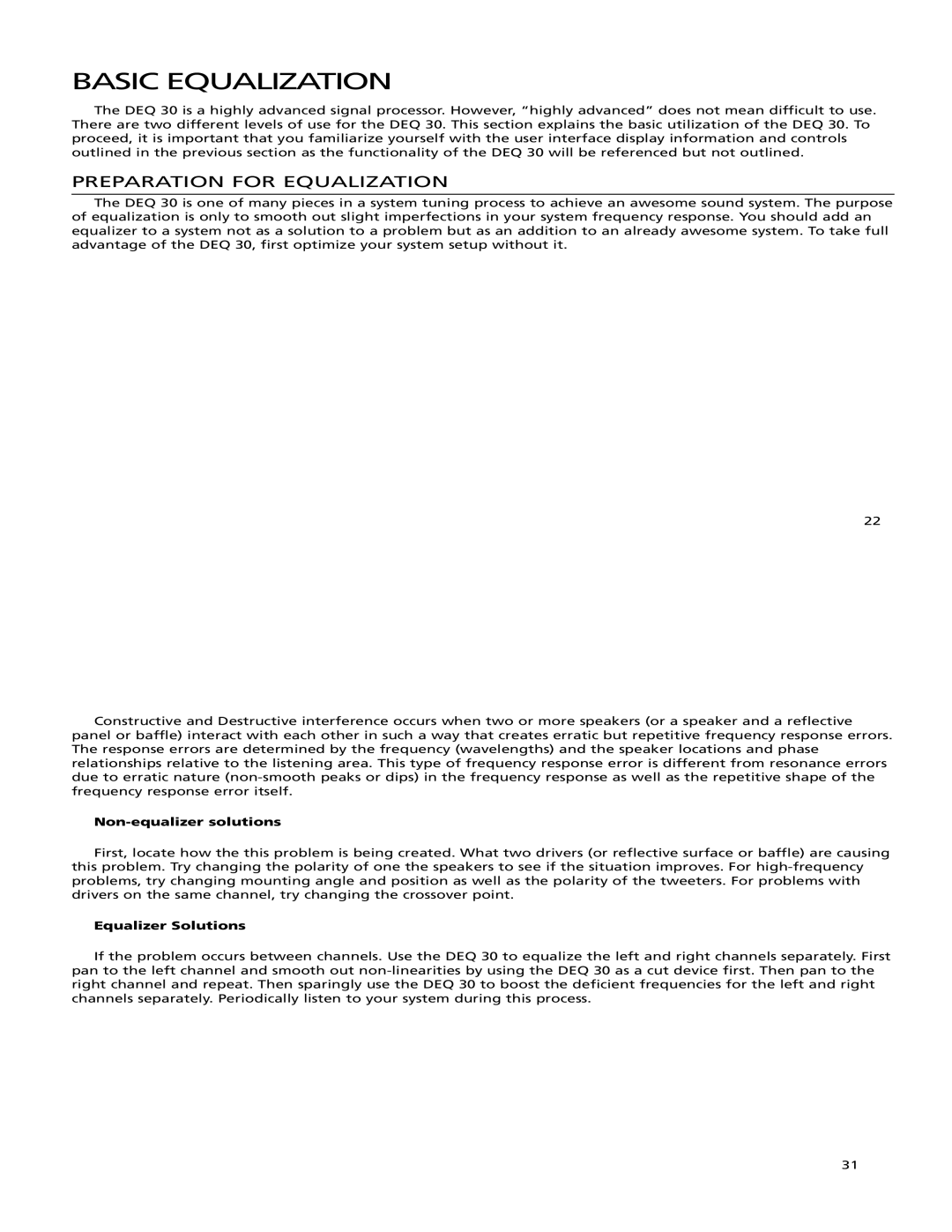BASIC EQUALIZATION
The DEQ 30 is a highly advanced signal processor. However, “highly advanced” does not mean difficult to use. There are two different levels of use for the DEQ 30. This section explains the basic utilization of the DEQ 30. To proceed, it is important that you familiarize yourself with the user interface display information and controls outlined in the previous section as the functionality of the DEQ 30 will be referenced but not outlined.
PREPARATION FOR EQUALIZATION
The DEQ 30 is one of many pieces in a system tuning process to achieve an awesome sound system. The purpose of equalization is only to smooth out slight imperfections in your system frequency response. You should add an equalizer to a system not as a solution to a problem but as an addition to an already awesome system. To take full advantage of the DEQ 30, first optimize your system setup without it.
22
Constructive and Destructive interference occurs when two or more speakers (or a speaker and a reflective panel or baffle) interact with each other in such a way that creates erratic but repetitive frequency response errors. The response errors are determined by the frequency (wavelengths) and the speaker locations and phase relationships relative to the listening area. This type of frequency response error is different from resonance errors due to erratic nature
Non-equalizer solutions
First, locate how the this problem is being created. What two drivers (or reflective surface or baffle) are causing this problem. Try changing the polarity of one the speakers to see if the situation improves. For
Equalizer Solutions
If the problem occurs between channels. Use the DEQ 30 to equalize the left and right channels separately. First pan to the left channel and smooth out
31
